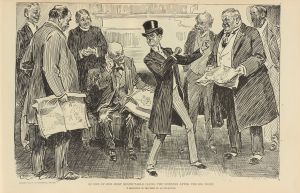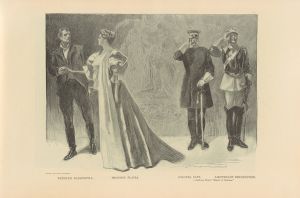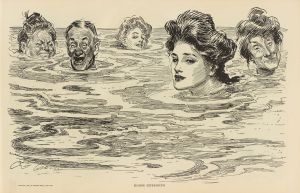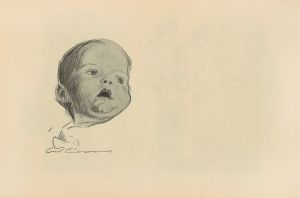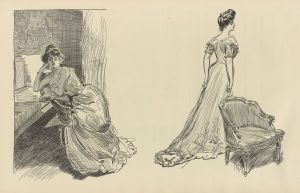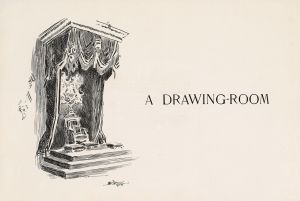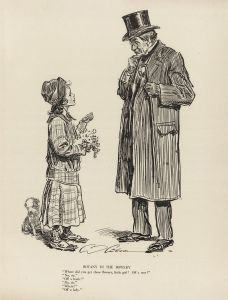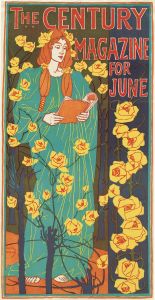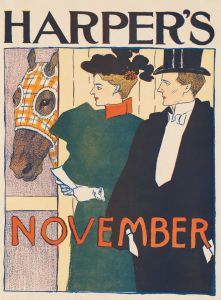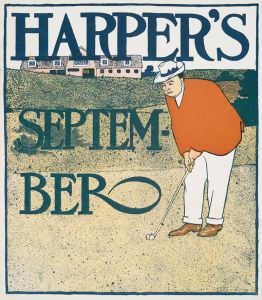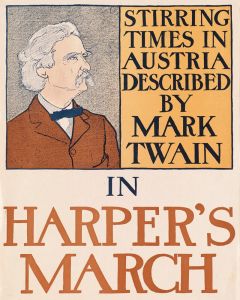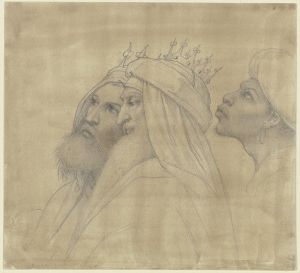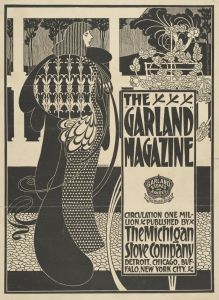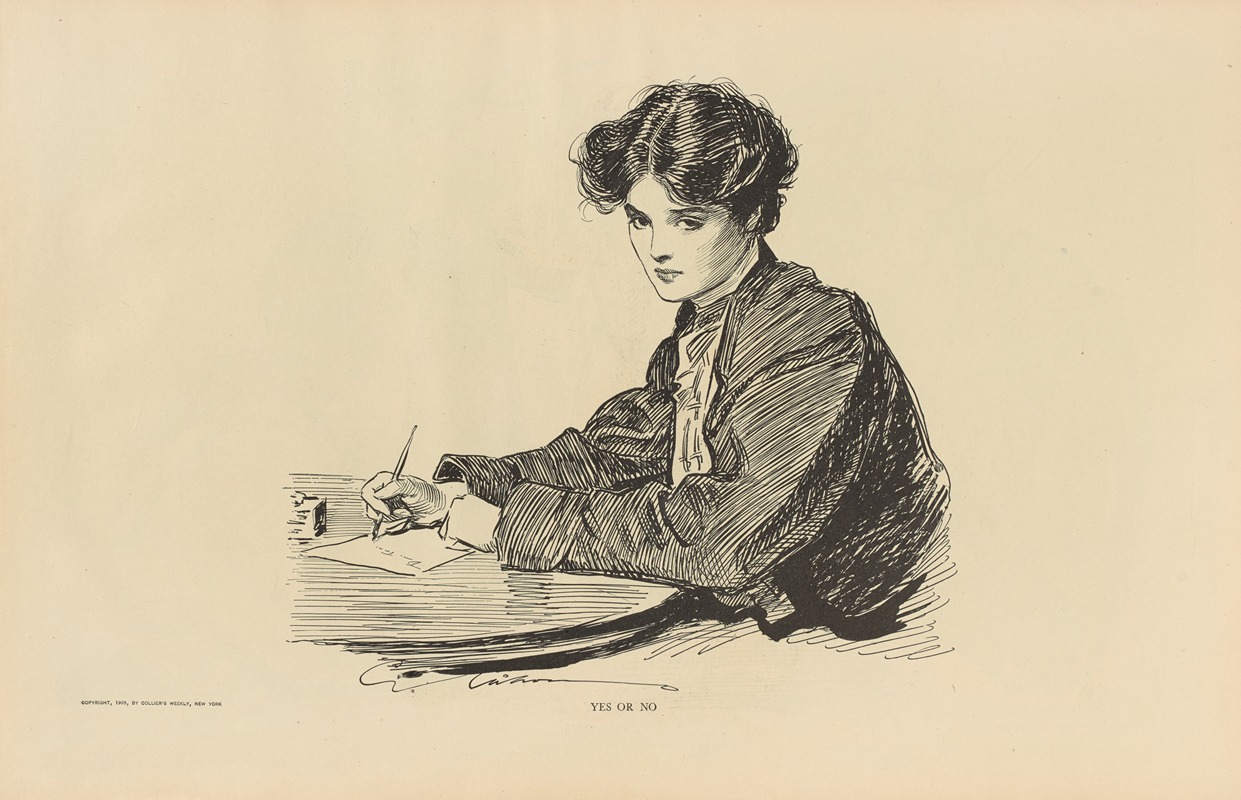
Yes or no
A hand-painted replica of Charles Dana Gibson’s masterpiece Yes or no, meticulously crafted by professional artists to capture the true essence of the original. Each piece is created with museum-quality canvas and rare mineral pigments, carefully painted by experienced artists with delicate brushstrokes and rich, layered colors to perfectly recreate the texture of the original artwork. Unlike machine-printed reproductions, this hand-painted version brings the painting to life, infused with the artist’s emotions and skill in every stroke. Whether for personal collection or home decoration, it instantly elevates the artistic atmosphere of any space.
Charles Dana Gibson was an influential American illustrator best known for his creation of the "Gibson Girl," an iconic representation of the American woman at the turn of the 20th century. One of his notable works, "Yes or No," exemplifies his skill in capturing the social dynamics and fashion of his time through pen-and-ink drawings.
"Yes or No" is a black-and-white illustration that showcases Gibson's characteristic style, marked by detailed line work and a keen eye for the subtleties of human expression and posture. The artwork typically features a scene involving a man and a woman, often engaged in a moment of social interaction or decision-making, which is a recurring theme in Gibson's work. The title "Yes or No" suggests a moment of decision or contemplation, a common motif in Gibson's illustrations that often explore themes of courtship, societal expectations, and gender roles.
Gibson's illustrations, including "Yes or No," were widely published in popular magazines of the time, such as Life, Harper's Weekly, and Scribner's, reaching a broad audience and influencing public perceptions of beauty and social norms. The "Gibson Girl" became a cultural phenomenon, representing the idealized American woman—independent, confident, and stylish. This image was characterized by an hourglass figure, upswept hair, and fashionable attire, often depicted in social settings that highlighted her poise and sophistication.
The significance of "Yes or No" and similar works lies in their reflection of the cultural and social attitudes of the late 19th and early 20th centuries. Gibson's art captured the complexities of gender relations during a time of significant social change, as women were beginning to assert more independence and challenge traditional roles. His illustrations often portrayed women as equal participants in social interactions, subtly commenting on the evolving dynamics between men and women.
Charles Dana Gibson's work, including "Yes or No," remains an important part of American art history, offering insight into the cultural landscape of his era. His ability to convey emotion and narrative through simple yet expressive line drawings has left a lasting impact on the field of illustration. While "Yes or No" may not be as widely recognized as some of his other works, it nonetheless contributes to the broader understanding of Gibson's artistic legacy and the societal context in which he worked.
In summary, "Yes or No" by Charles Dana Gibson is a quintessential example of the artist's ability to capture the essence of his time through illustration. It reflects the themes and styles that defined his career and offers a window into the social dynamics of the early 20th century. Through his work, Gibson not only entertained but also subtly influenced the cultural perceptions of gender and society, making his art both a product and a shaper of its time.





